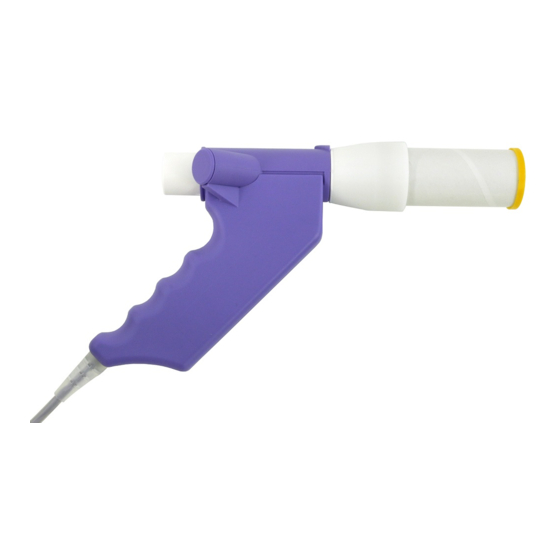
Advertisement
Quick Links
For use in Primary Care
Easy on-PC
This step by step guide is designed to show users how to add patient details and perform a basic
spirometry test using the EasyOne Connect software. IMPORTANT: Please ensure the software
is fully installed and configured correctly before use. Refer to configuration guide
(document reference 0318).
1
Double click on the EasyOne
Connect software icon on the
Desktop to open the software.
4
From the main menu, click on
"Patients"
| Quick Start Guide
2
Plug the Easy On Flowhead
into the USB port of the PC.
5
Click on "New" on the bottom
left hand side of your screen.
Fill in the patient details as
required. Then click "OK"
You have a choice of 5 tests. The only tests that you
7
will use are "SVC" and "FVC"(ex only). To perform a slow
VC first click on "SVC". On the next screen the ambient
temperature etc will be shown. Click Confirm.
You will then be asked to block the spirette. Place
your palm over the end of the spirette (as shown) and
click "OK". This will set the baseline for the spirometer.
When the message 'Start test' appears you are ready to
perform the relaxed test.
n d d
3
Insert the Spirette 'M' into the
flow head. Attach adaptor
and insert a clean one way
valve mouthpiece.
6
The patient you have just
added will be already
highlighted in the patient list.
Click on "Test" to proceed.
Doc 0327 iss02
Advertisement

Subscribe to Our Youtube Channel
Summary of Contents for NDD Easy on-PC
- Page 1 For use in Primary Care Easy on-PC n d d | Quick Start Guide This step by step guide is designed to show users how to add patient details and perform a basic spirometry test using the EasyOne Connect software. IMPORTANT: Please ensure the software is fully installed and configured correctly before use.
- Page 2 Perform the test. When the manoeuvre has ended the results will be shown at the bottom left of the screen of the screen. To perform a second manoeuvre click “Add Trial” and perform the second test. When the second manoeuvre has been performed you will also be able to see a % variation between the tests and also the variation in mls.




Need help?
Do you have a question about the Easy on-PC and is the answer not in the manual?
Questions and answers